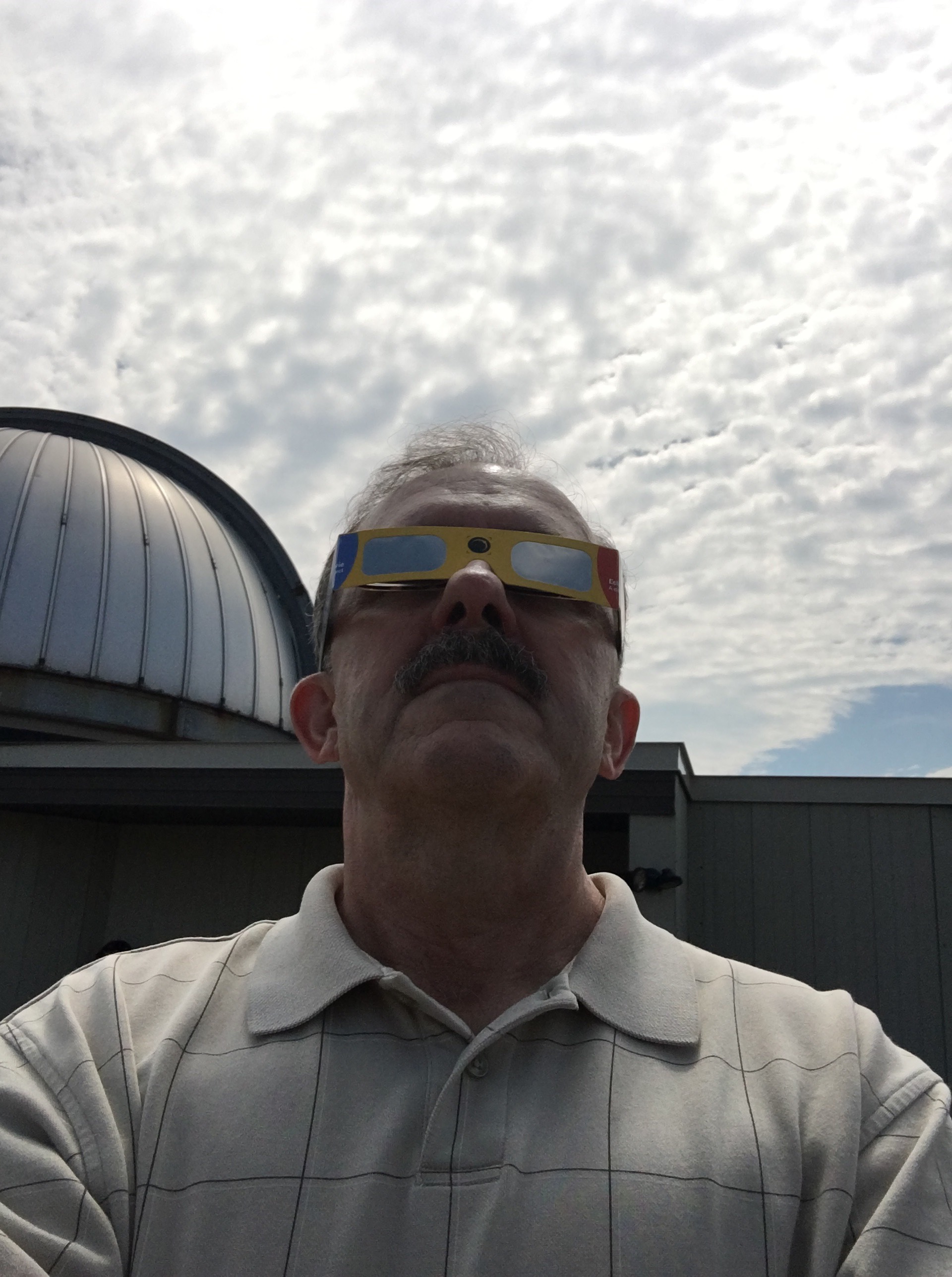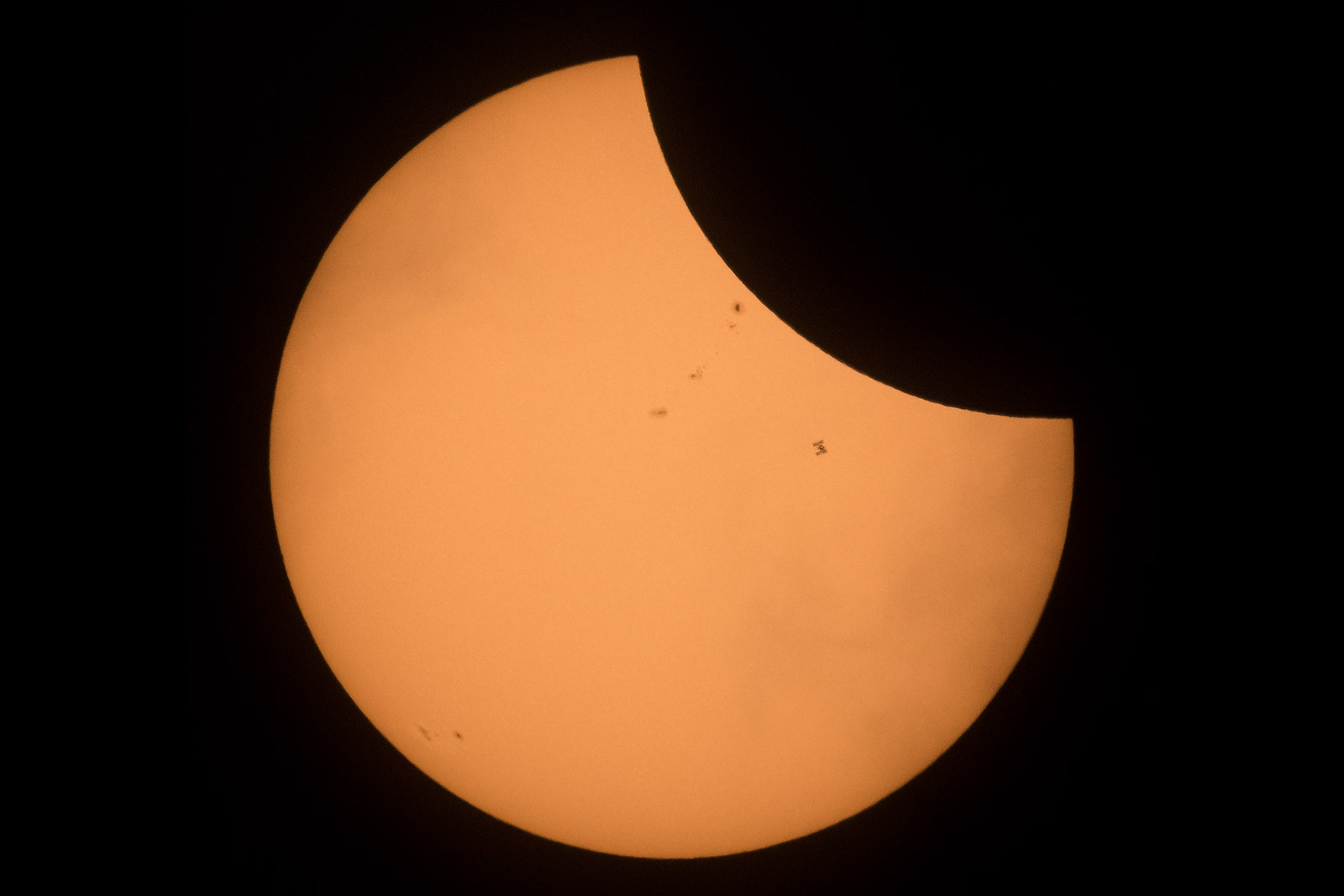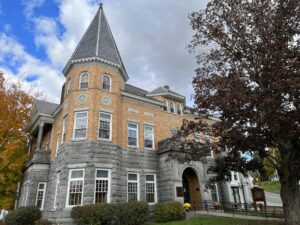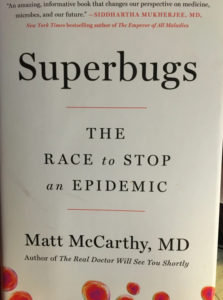(Headline: Lyric from “Moon Shadow,” written and sung by Cat Stevens, 1971)
It’s Aug. 21, 2017, and much of the Western Hemisphere is glued to TVs, the sky, and computer screens. Let’s meet our players for the afternoon’s drama.
First there’s the sun, the fiery provider of heat and light to our precious planet. Our own personal star is hurtling through the cosmos at a relative speed of about 45,000 miles per hour.
The second participant is our faithful satellite, the moon. At a distance of about 240,000 miles from its mother planet, the moon moves along at a cosmically pokey speed of 2,300 miles per hour.
Finally, there’s us: the blue, brown and white jewel of a planet orbiting the sun — 93 million miles away — at a fairly good clip of 67,000 miles per hour.
Normally, the speeds and movements of all three heavenly bodies mean little to the general public. We all have a vague sense of a complex pattern of movement that leads to days, nights, seasons, and tidal shifts. This intricate ballet of orbital mechanics gets even more difficult to grasp if we start considering the velocity of the Milky Way Galaxy where this dance is taking place. Let’s not go there for now, lest we start over-taxing our brain’s synapses.
On this late-summer day and for the first time on such a coast-to coast scale in almost a century, the speeds and paths of all three — sun, Earth and moon — came together for one shining, or dimming, moment. This rare large-scale solar eclipse in our area of the world happens when the moon creeps right in front of the sun as it delivers its full dose of heat, light, and radiation to Earth. For centuries, the sudden daytime darkness of eclipses sparked fear and misunderstanding. When astronomers and other scientists began to predict them precisely, solar eclipses instead sparked wonder and amazement among millions who turn to the sky to, hopefully safely, glimpse a once-in-a-lifetime celestial event.
And it was everything scientists had hoped for. This eclipse lived up to the billing of an Aug. 14, 1932, New York Times story which promised that the next major solar eclipse on Aug. 21, 2017 — 85 years in the future — would be a golden opportunity to view an eclipse crossing the entire continent. It also helped that the weather cooperated. Here in Northeastern New York, partly sunny skies allowed most to witness the dark disk obscuring about 65 percent of the sun at peak.
Viewing it locally
I spent part of the afternoon viewing the eclipse on the roof of Rensselaer Polytechnic Institute’s Jonsson-Rowland Science Center, hovering near the Hirsch Observatory. With special solar viewing glasses provided by RPI, I joined hundreds staring at the sky in near 90-degree heat. At about 1:25 p.m., the show started.
Donning my special glasses, I looked upward. There, in the far right corner of the sun, I spotted a dark, semi-circular object moving slowly from right to left. As I stared, a smattering of ghostly clouds drifted across, also from right to left. They weren’t enough, though, to block our view of the sun.

In front of Rensselaer Polytechnic Institute’s Hirsch Observatory.
The reaction from the crowd of children, parents, college students, professors, and university administrators was silence for the first few seconds. Then came the first “oh my gods.” There were the expected “oohs” and ahhs.” Most of the crowd was now turned in the same direction, looking straight up and then slightly to the south where the eclipse unfolded. Parents continually warned their children to place the special glasses over their eyes first.
Perhaps the best line of the day came from a young boy, about 10 years old. His eyes were locked onto the unfolding eclipse when he suddenly realized the shadow was growing larger. He tugged on his mother’s arm, trying to get her to break off from a conversation with another parent.
“Mommy, it’s eclipsing more!” he shouted. I realized then that while I had heard the word eclipse used as a verb, I had rarely heard the present participle version. The mother relented and terminated her conversation. Following her son’s instructions, she lifted the glasses to her eyes, and looked up. She gasped when she spotted the growing shadow, and thanked her son. Smart kid.
I tracked the eclipse as it grew closer to the expected maximum coverage of about 65 percent around 2:40 p.m. We live far north of the zone of “totality” where viewers from the nationwide northwest to southeast track would see the sun totally obscured. Total coverage by the moon allows the usually invisible corona and solar flares to be seen without aid of telescopes and other scientific means.

The sun totally blocked by the moon on Aug. 21, or “totality.” This allows us to view the normally invisible corona – a collection of high temperature gases – around the sun. (Photo credit CNN)
I wandered around the roof to talk with some of the amateur astronomers. I marveled at the “box and pinhole” viewing devices that RPI students had constructed in an effort to show visiting children how easy it was.
In between two- to five-minute viewing sessions, I stood beneath the shadow of the Hirsch Observatory dome to hide from the sun’s powerful rays. I had forgotten a hat and sunscreen, so I felt vulnerable.

One of the eclipse photos I tried to take with the ‘selfie’ function on my iPhone. You can see the moon’s shadow creeping in from the left. Since this is a mirror image with the selfie function, the moon is actually moving right to left.
Why is a solar eclipse a big deal?
To begin with, eclipses are rare. They just don’t happen frequently, and seldom in such a manner that millions can witness it.
Online news sources, newspapers, and broadcast media outlets trumpeted the event for weeks. Much of the coverage focused on the mass migration of tourists and scientists to areas that would experience totality. Reporters and anchors talked endlessly about witnessing the scientific phenomenon.
For the people who accurately predicted the eclipse down to the second and have spent a lifetime studying the cosmos, the phenomenon had a slightly different meaning: People stopped for a moment, no matter how briefly, to try to understand the science behind it all.
“All across the country, astronomers were in high demand as people of all ages sought help to safely view the sky and to understand the event that was unfolding before them,” RPI Astronomy Professor Heidi Newberg told me. “We are the seekers and the keepers of knowledge about the solar system, galaxy, and universe in which we live, and we are here for the public when we are needed. It was heartwarming to see the public enthusiasm to look through telescopes and hear the exclamations of wonder at seeing the eclipse, whether through glasses, in projection, or through telescopes.”
She continued, “For me, astronomy is interesting every day. Through small telescopes we can see craters on the Moon and sunspots on the Sun, and wonder about the processes that shape both of these features. But for most of our visitors, it was a special event that induced them to take the effort to ponder the skies, and step through the door into my world for just a few hours.”
Prof. Newberg was spot on. Among friends, families, and acquaintances who rarely thought about the skies, the coming eclipse and related science was a common topic leading up to the afternoon of Aug. 21. I do hope that for some it fuels a lifelong interest in the branch of physics known as astronomy. Despite the fact that I studied chemistry in college, I have always considered astronomy a sort of all-encompassing science. Those who study and practice astronomy, after all, are trying to learn about where we came from, our place in the cosmos, and where we are headed. And are we alone?
Ending the day
Shortly before 3 p.m., as I noticed the moon’s shadow on the sun growing smaller, I headed downstairs to my car. I wanted to get home to allow my wife and our neighbors to view the waning eclipse through the special safety glasses. They were using home-built viewing devices made from cardboard boxes and cereal containers. These worked well, but I hoped to give them a direct glimpse before the shadow disappeared. They enjoyed it.
Later in the day, I tried to process the event and what it meant to me. It wasn’t that difficult. Why did some people, I asked myself, who doubt the raw, empirical science of impending danger from man-made climate change so readily accept and act on alerts and explanations from scientists about the solar eclipse? The sciences associated with both are not that divergent. As I watched eclipse news reports later that night, I hoped that perhaps the day’s events would open the eyes of some to the important role of science in our 21st century world.
They don’t need special glasses for that.




